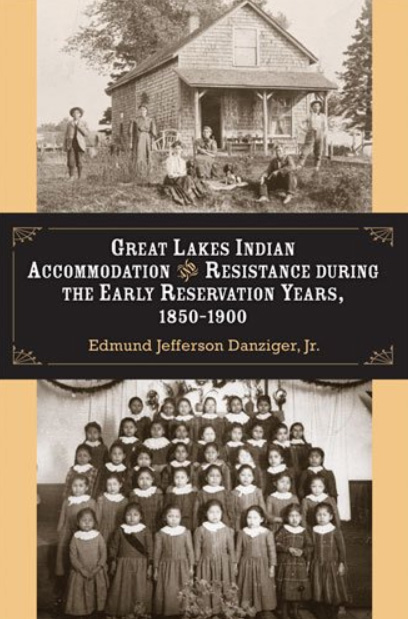Book Review: How Great Lakes First Peoples dealt with colonialism
Edmund Jefferson Danziger’s study of Great Lakes Indian history from 1850 to 1900 examines how First Peoples living on both sides of the international border responded to colonialism through adjustment, contestation, and accommodation.
Danziger breaks the study into three topical sections: “Making a Living”, “Battling for the Mind and Soul”, and “Who Shall Rule at Home”. Each section examines how Canada’s and the United States’ policies of assimilation were resisted, countered, or accommodated, depending on individual or community circumstances and decisions. These decisions ensured that “many of [our] core values, land, and Indian identities,” remained. For instance, in ‘Making a living’ Danziger shows how Anishinaabeg people adopted agriculture while maintaining a seasonal round of traditional and wage labour thereby eroding government policies to sedentarize them.
Overall this is an excellent read despite a few glitches that do not take away from the argument. One such glitch is the unexplained statement “ferociuos Potawatomi” – Why ferocious? My only quibble is how the emphasis on a positivistic examination of resistance and accommodation under-plays the settler governments’ efforts to enforce assimilation by any means. Danziger sees the period between 1850 and 1900 as having more wiggle-room based on the newness of assimilation policies, while the post-1900 period offered more limited options as settler governments turned to coercion and twentieth-century technology made inroads into our cultures. Nonetheless, the book is a must-read for anyone wanting to know about our relations’ efforts to ensure that we would remain “Indian”.
Danziger, Edmund Jefferson. Great Lakes Indian Accommodation and Resistance During the Early Reservation Years, 1850-1900. Ann Arbour: The University of Michigan Press, 2009.



